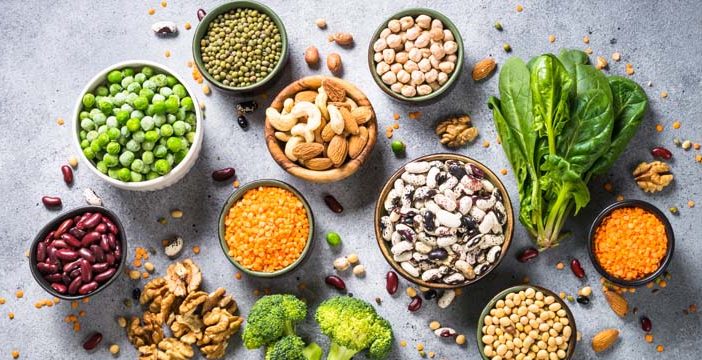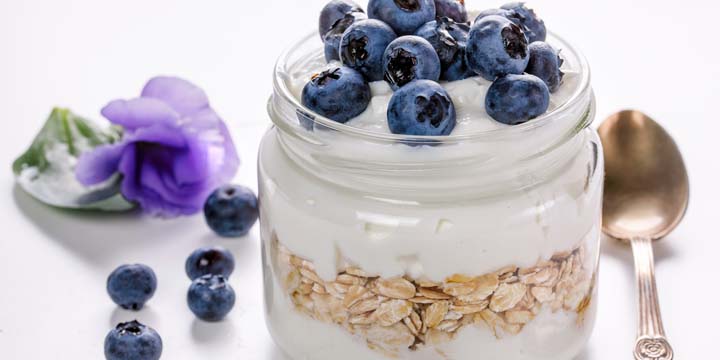
We still don’t know exactly why some people’s bodies can’t respond to insulin properly. Fortunately, we can take steps to improve our body’s sensitivity to insulin, which helps regulate blood sugar more effectively. In addition to healthy lifestyle habits such as regular exercise and adequate sleep, there are foods that help improve insulin sensitivity in our bodies too. Let’s take a look at the top 10 foods to consider in supporting better blood sugar control.
Why does insulin sensitivity matter?
The body needs sugar for energy, and insulin is a hormone that helps move sugar from the bloodstream to the cells where it can be used. The more insulin sensitive your body is, the more efficient it can be in using insulin to regulate blood sugar.
What’s the connection between insulin sensitivity and insulin resistance?
Insulin sensitivity and insulin resistance have an inverse (opposite) relationship.
Decreasing insulin resistance = Increasing insulin sensitivity = Decreased blood sugar
Increasing insulin resistance = Decreasing insulin sensitivity = Increased blood sugar
When you have insulin resistance, your cells are less sensitive to insulin which puts pressure on your pancreas to produce more insulin to keep blood sugar regulated. When cells cannot process the extra sugar, blood sugars rise to unhealthy levels and over time, this can lead to prediabetes, or type 2 diabetes and other health complications.
When blood sugars remain chronically high due to insulin resistance, there can be significant health repercussions, such as heart and kidney issues, as well as nerve damage.
How does diet impact insulin sensitivity?
The research shows there are foods that can help support insulin sensitivity because they influence processes in the body that help regulate blood sugar and reduce inflammation. Some examples are non-starchy vegetables, citrus and whole grains. Read on for a more comprehensive list of foods to improve insulin sensitivity.
What are 10 food that improve insulin sensitivity?
Here are some key foods linked to improving insulin sensitivity, and in turn, may help reduce the risk of prediabetes and complications related to unmanaged blood sugars.
1. Non-starchy vegetables. Dark leafy greens, broccoli, tomatoes and peppers are all great options. Start dinner with a salad or add spinach or broccoli to your next morning omelet.
2. High-fibre foods, such as lentils, nuts, seeds and beans, will help balance your blood sugars and improve insulin sensitivity. Try this tasty Bolognese Sauce with Lentils
3. Whole grains, such as barley, oats, brown rice, quinoa and millet, are other good options for keeping blood level sugar levels in check. In addition to eating whole grains for breakfast, try adding quinoa or millet to a supper salad or stew.
4. Citrus, such as oranges, lemons and limes, are rich in vitamin C which reduces inflammation in the body. Here’s a recipe for a Citrus Refresher loaded with vitamin C.
5. Fish that are high in omega-3 fatty acids, such as salmon, sardines and herring, are also beneficial for good heart health. These Salmon-Stuffed Avocados are a good low-carb option.
6. Water. It is a refreshing, calorie-free alternative to sugary drinks which make blood sugars spike. Try adding lemons, mint or berries to your water for an added flavour boost.
7. Protein-rich foods, such as lean meats, fish, nuts and legumes. A general guideline for improving insulin resistance is consuming 15–30% of your total daily calories from protein. This helps keep blood sugar levels stable and promotes muscle mass, which is important for improving insulin sensitivity.
8. Berries and other high-antioxidant foods, such as colourful fruits and vegetables. Add berries to smoothies, whole grain cereals, yogurt and cottage cheese. Or try this Frozen Yogurt Berry Bark
9. Unsweetened yogurt. Recent research points to the benefits of yogurt consumption in improving insulin resistance. Best to eat it plain and add healthy toppings such as berries, nuts and cinnamon. Read more on The Best Canadian yogurts for people with diabetes.
10. Avocados. Add avocado to salads or in a smoothie or on top of whole grain toast. Avocados are high in healthy fats and fibre. They can help stabilize blood sugar and improve insulin sensitivity. Consider adding this high protein avocado toast to your diabetes meal plan.
The bottom line is that diet plays a key role in reducing insulin resistance and/or improving insulin sensitivity. Sticking to a high-fibre diet that’s low in added sugars is a key step in improving insulin sensitivity. Along with diet, it’s also important to get plenty of sleep, reduce your stress, maintain a healthy weight and get regular exercise. All of these factors combined will help put you on the right track for improving your body’s insulin sensitivity.



